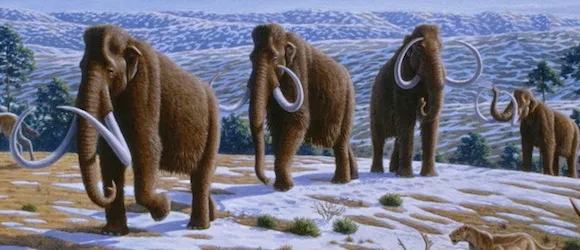One of the more ironic effects of global warming is that it’s giving us a better look at some creatures who lived during the last ice age. With the various new extremes of weather comes warmer temperatures in Siberia, and less permafrost.
Where there’s less permafrost, there’s more exposed mammoth remains, released from their ten thousand year prison for paleontologists and mammoth hunters. This has lead to the discovery of immaculately preserved remains earlier this year, and most recently, an “international expedition in Russia’s northeastern republic of Yakutia” says they’ve found “living cells” from a mammoth.
Imma stop you right there, science.
Look. You’ve been promising that you’re going to clone a wooly mammoth for years now. I think I was in elementary school the first time I imagined going to see a giant fuzzy elephant baby in the zoo. At least tell me who you’ve got on the job this time.
Controversial South Korean scientist Hwang Woo-Suk has already manifested an interest in the discovery, Russia’s North-Eastern Federal University said in a press release last week.
Ok, well, embryo research is sometimes controversial…
Hwang, the leader of Sooam Biotech Research Foundation, was hailed as a national hero in South Korea and awarded the title “supreme scientist” until some of his research on human embryos was declared bogus in 2006.
Uh… huh.
He received a suspended jail term in 2009 for embezzlement and accepting millions of dollars in grants under false pretences. Hwang created the world’s first dog clone, an Afghan hound puppy, in 2005. In October last year, he claimed to have cloned coyotes for the first time.
Okay, so what do more credible scientists say? Right, right, cell nuclei can be preserved under deep freeze, but need their environment to remain stable and that nobody’s managed so far to extract the full DNA of a wooly mammoth.
I wish I could quit you, cloned wooly mammoth dream.
(via RIA Novosti.)








Published: Sep 12, 2012 11:47 am